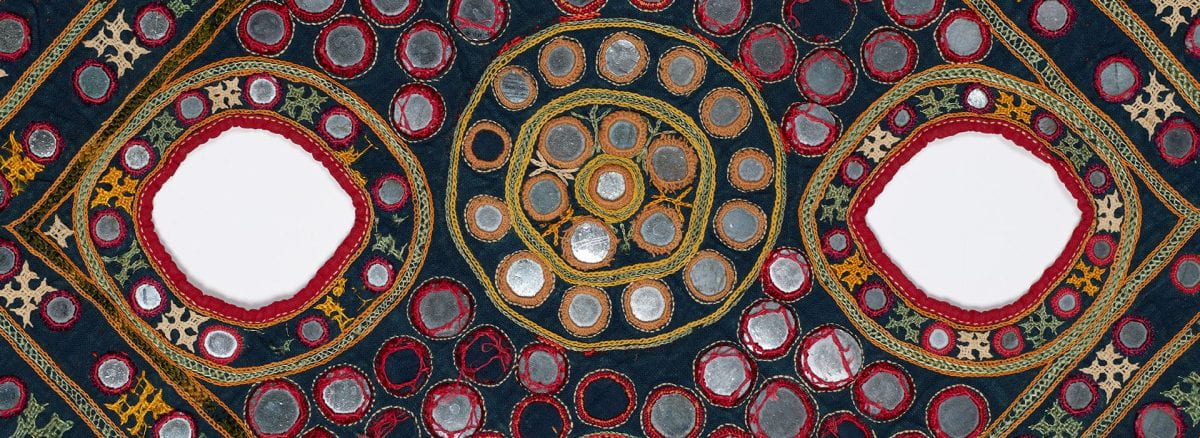For holidays, festivals and marriage rituals across India, people have traditionally adorned themselves and their working animals with colorful clothing and jewelry as a symbol of gratitude and respect to the deities. Textiles and dress still play a central role in the identity of the various regions of the country and their communities.
This ceremonial headcover was likely made for a horse. The two holes were designed to go over its ears, and the ornate square featuring mirror work or “abhalan” decorated the horse’s forehead. Mirrors were used to create a shiny effect that would protect the animal from negative energy and evil.

The textile features a deep blue cotton ground cloth embellished with gold and red embroidery. The small mirrors are arranged in round floral patterns and secured with chain stitching and interlacing. The use of silk floss in blue and red was popular in the 19th and early 20th centuries in the northwestern area of Saurashtra, Gujarat, among the pastoral Kathi community. This region, also known as Kathiawar, was well known for horse breeding.
It is not precisely known how this animal trapping was used, but one can imagine a handsome and stately steed in a holiday festival procession or with a bridegroom upon its back. The elaborately decorated animal surely would have dazzled onlookers and marked the auspiciousness of the event.

